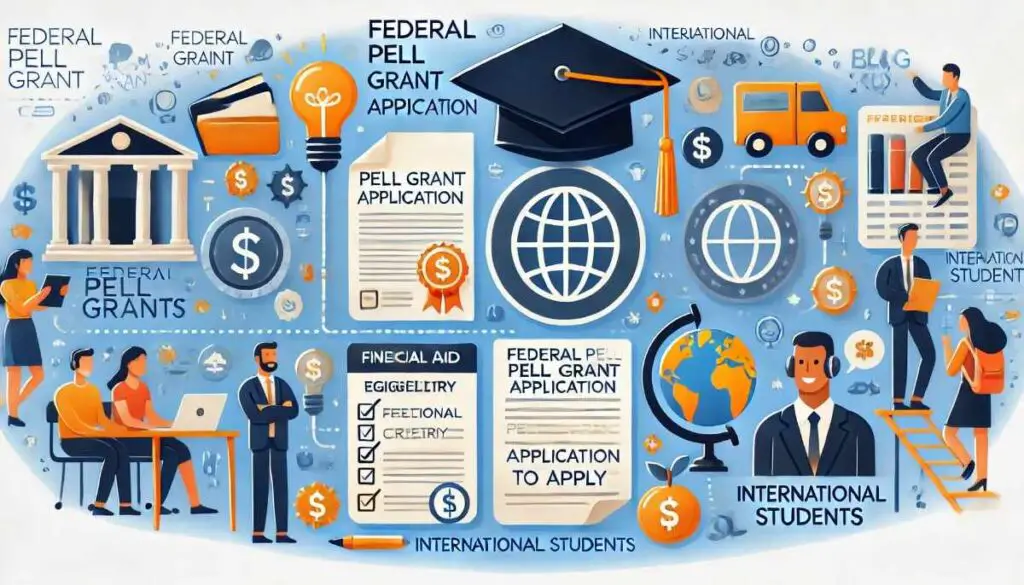In the world of car buying, negotiation skills can make all the difference between securing a great deal and overpaying for your dream vehicle. The process of negotiating a car deal can be intimidating, but with the right preparation and strategy, you can confidently navigate the showroom floor and drive away with a smile on your face. In this comprehensive guide, we will unveil the secrets to mastering the art of car negotiation and help you outrank other websites by providing you with valuable insights and strategies that will empower you throughout your car-buying journey.
The Challenge of Negotiating a Car Deal
The Power of Preparation and Strategy
Before you even set foot in the dealership, it’s crucial to have a well-thought-out plan. This plan should encompass various aspects of the negotiation process, from researching the market value of your desired car to setting a budget and understanding the intricacies of car loans.
Before You Step Foot in the Dealership: Research is Your Best Friend
One of the most critical steps in the car-buying process is conducting thorough research before you even set foot in the dealership. This research phase serves as the foundation for your negotiation strategy and empowers you to make informed decisions. Here’s a detailed breakdown of why research is your best friend in the car-buying journey:
Know the Market Value of the Specific Car You Want
Before embarking on your visit to the dealership, it’s imperative to have a clear understanding of the market value of the particular car model you intend to purchase. This knowledge will be your guiding light during negotiations. There are several reasons why this step is crucial:
- Pricing Transparency: Knowing the market value allows you to gauge whether the dealer’s asking price is fair or inflated. It prevents you from overpaying for the vehicle.
- Negotiation Confidence: Armed with pricing information, you approach the negotiation table with confidence. You have a clear benchmark to work from, making it easier to negotiate for a price that aligns with the car’s true worth.
- Avoiding Deceptive Pricing: In some cases, dealers may use high-pressure tactics or obscure pricing to make the car seem like a better deal than it is. Research helps you see through these tactics and make rational decisions.
Utilize Resources like Kelley Blue Book
Kelley Blue Book (KBB) is an invaluable resource in the automotive industry. It provides a plethora of information on car pricing, and here’s why it’s a must-visit site in your research journey:
- Historical Data: KBB offers historical data on car prices, enabling you to track how a specific model’s value has changed over time. This information can be particularly useful when considering older vehicles or anticipating depreciation.
- Expert Reviews: KBB’s expert reviews provide insights into the car’s performance, features, and overall quality. These reviews can help you determine if the car aligns with your needs and expectations.
- Consumer Ratings: Real-world experiences matter. KBB aggregates consumer ratings and reviews, giving you a glimpse into how actual car owners rate their vehicles. This peer feedback can be instrumental in your decision-making process.
Edmunds and Its Valuable Insights
Edmunds is another reputable platform that should be in your arsenal when researching your prospective car purchase:
- Detailed Reviews: Edmunds offers comprehensive reviews of various car models, delving into the nitty-gritty details that matter to buyers. These reviews cover everything from performance and safety to technology and comfort.
- Expert Advice: Leveraging the expertise of Edmunds’ automotive experts, you can gain valuable advice on factors like reliability, fuel efficiency, and resale value. This advice assists you in selecting a car that aligns with your long-term goals.
- Pricing Data: Edmunds provides up-to-date pricing data, helping you understand the current market conditions and pricing trends for the car you’re interested in.
Consumer Reports’ Trusted Reviews
Consumer Reports is an impartial source renowned for its unbiased reviews and ratings of various products, including cars:
- Reliability Insights: Consumer Reports’ assessments of car models’ reliability can be a game-changer. Knowing which cars are less prone to breakdowns or major issues can save you from future headaches and unexpected expenses.
- Performance Assessment: These reviews evaluate a car’s performance in real-world conditions, which can provide a more practical perspective compared to manufacturer claims.
- Potential Issues: Consumer Reports often highlights common issues reported by car owners. Being aware of these problems can help you anticipate potential maintenance or repair costs.
Setting the Baseline for Negotiation Success
With all this research at your fingertips, you’re well-equipped to set a baseline for negotiation success. Armed with pricing information, expert opinions, and knowledge of potential strengths and weaknesses of the car model, you can determine a reasonable target price for your purchase. This target price serves as your negotiation goal, ensuring that you enter the dealership with a clear objective and the confidence to secure the best possible deal.
In summary, research is your best friend in the car-buying process. It empowers you with knowledge, confidence, and the ability to make informed decisions, ultimately leading to a successful negotiation and a satisfying car purchase experience.
Pre-Approval: Your Negotiation Trump Card
Shop Smart for Car Loans
Set a Budget and Stick to It
Trade-In Strategy
During the Negotiation: Focus on the “Out-the-Door” Price
When you find yourself in the midst of negotiating the purchase of your new car, it’s essential to adopt a strategic approach that centers around the “out-the-door” price. Here’s why focusing on this key aspect is crucial:
Focus on the “Out-the-Door” Price:
- Inclusive of All Costs: The “out-the-door” price encapsulates all the costs associated with the purchase, ensuring transparency and preventing any hidden fees or surprises later in the process.
- Total Cost Understanding: By concentrating on the “out-the-door” price, you gain a comprehensive understanding of the total financial commitment you are making. This includes the base price of the vehicle, taxes, registration fees, documentation fees, and any optional add-ons.
- Avoiding Distractions: Emphasizing the “out-the-door” price allows you to steer clear of distractions such as monthly payments or financing terms during the initial negotiation. These details can be addressed once the final price is agreed upon.
The Art of the Lowball Offer:
Negotiating effectively often involves employing strategies to achieve a favorable outcome. One such strategy is the lowball offer. Here’s how to approach it:
Don’t be Afraid to Start with a Lowball Offer:
- Creating Negotiation Leverage: Beginning with a lowball offer sets the stage for negotiation. It signals to the dealer that you are a savvy buyer who is committed to securing the best possible deal.
- Room for Compromise: A lowball offer provides room for both parties to engage in a constructive negotiation. It acknowledges that there is likely a middle ground that can be reached through discussion and compromise.
- Win-Win Opportunities: Successful negotiations result in a win-win situation, where both you and the dealer are satisfied with the outcome. By starting with a low offer, you increase the chances of achieving a favorable deal while still allowing the dealer to make a reasonable profit.
Overcoming the Fear of Starting Low:
It’s natural to have reservations about presenting a low offer, but it’s important to overcome this fear by considering the following:
- Common Strategy: Starting low is a common and accepted negotiation tactic. Dealers are accustomed to it and often expect some initial haggling.
- Demonstrating Savvy: Presenting a lowball offer showcases your determination to secure a great deal. It demonstrates that you are a knowledgeable and value-conscious buyer.
- Negotiation Dynamics: Negotiations are dynamic, and both parties have the opportunity to adjust their positions. Starting low allows for this fluidity and encourages a productive exchange.
In conclusion, during the negotiation process, focusing on the “out-the-door” price is essential for clarity and transparency. Additionally, the strategic use of a lowball offer can create negotiation leverage, foster compromise, and lead to a mutually beneficial outcome where both you and the dealer walk away satisfied with the deal.
The Power of Walking Away
In the realm of car negotiations, the ability to walk away from the bargaining table is a potent strategy that can yield significant advantages. Here’s an in-depth exploration of why this tactic is influential:
Demonstrating Your Seriousness:
- Sign of Confidence: Walking away from a negotiation demonstrates confidence and resolve. It signals to the dealer that you are not desperate to make a deal at any cost, which can place you in a stronger position.
- Willingness to Explore: By showing your readiness to walk away, you convey your willingness to explore other options and dealerships. This can motivate the dealer to be more flexible and accommodating in their offers.
Encouraging the Dealer to Reconsider:
- Reevaluation of Offer: When you step away from the negotiation, the dealer may reevaluate their offer, especially if they believe you are a serious and committed buyer. They may be more inclined to adjust their terms to retain your interest.
- Potential for Better Terms: The act of walking away can open the door to a renewed negotiation with the possibility of more favorable terms, whether it’s a lower price, better financing rates, or additional perks.
Avoiding Buyer’s Remorse:
- Reflection Time: Walking away provides you with valuable time to reflect on the deal without the pressure of immediate decision-making. It allows you to analyze whether the terms align with your needs and financial situation.
- Preventing Regret: Buyer’s remorse is a common post-purchase feeling. Walking away helps you avoid making impulsive decisions that you might later regret. It ensures that you are comfortable and confident in your final decision.
In summary, the power of walking away in car negotiations lies in its ability to convey seriousness, encourage the dealer to reconsider their offer, and provide you with an opportunity for reflection. It’s a strategic move that can lead to more favorable terms, increased confidence in your decision, and a successful outcome in the car-buying process.
Negotiate Everything: Beyond the Car’s Price
In the realm of car negotiations, it’s important to recognize that the price of the vehicle is just one facet of the deal. To secure the most advantageous arrangement, consider extending your negotiations to encompass various other aspects of the transaction:
1. Trade-In Value: Negotiate the value of your trade-in separately from the car’s purchase price. Ensure you receive a fair value for your current vehicle to maximize your overall deal.
2. Add-Ons: If you’re interested in additional features or accessories for the car, negotiate these add-ons as part of the deal. Whether it’s premium audio, extended warranties, or upgraded features, discussing these options can lead to a more customized and appealing package.
3. Financing Terms: Don’t overlook the financing terms. Negotiate the interest rate, loan term, and monthly payments to align with your financial goals. A lower interest rate can significantly impact the long-term cost of your car.
4. Fees: Various fees can be associated with a car purchase, such as documentation fees or dealer charges. These fees are negotiable, and it’s worth discussing them to ensure they are reasonable and fair.
Patience and Persistence Pay Off
Navigating the negotiation process for a car deal requires both patience and persistence. Here’s why these qualities are essential:
Recognizing That Negotiations Take Time:
- Time-Consuming Process: Negotiating a car deal is rarely a quick affair. Expect back-and-forth exchanges, discussions, and potentially multiple rounds of offers and counteroffers.
- Complexity: The negotiation process can involve multiple parties, including salespeople, managers, and financing representatives. This complexity contributes to the time required to reach a final agreement.
Being Prepared for Back-and-Forth Exchanges:
- Consultation Time: Dealerships may need time to consult with their management or financial departments to consider your offers. Be prepared for brief delays during the negotiation process.
- Multiple Offers: It’s common for negotiations to involve a series of offers and counteroffers. Each round brings you closer to a mutually acceptable agreement.
The Road to a Favorable Deal:
- Worth the Effort: While negotiations may be time-consuming and occasionally challenging, the end result—a favorable deal—justifies the time and effort invested.
- Mutually Beneficial Outcome: Successful negotiations result in a deal that benefits both you and the dealership. You secure a car that meets your needs at a price you’re comfortable with, and the dealership earns your business.
In conclusion, when negotiating a car purchase, remember that the price is just one aspect of the deal. Be prepared to negotiate trade-in value, add-ons, financing terms, and fees. Patience and persistence are valuable attributes during this process, as negotiations often require time and multiple exchanges. The ultimate goal is a mutually beneficial deal that aligns with your preferences and financial objectives
Additional Tips for Successful Car Negotiations
In addition to the fundamental aspects of car negotiation, certain supplementary tips can further enhance your negotiation experience and help you secure the best possible deal:
1. Politeness and Respect:
Maintaining a positive and respectful rapport with the salesperson and dealership staff is pivotal. Here’s why:
- Cooperative Relationship: Politeness and respect create a conducive atmosphere for constructive negotiations. A positive relationship can lead to a more amicable and productive exchange of offers and counteroffers.
2. Awareness of Common Dealer Tactics:
Recognizing common dealer tactics is an essential aspect of being a savvy negotiator. Stay informed about tactics such as the “bait and switch” and “urgency tactic”:
- Bait and Switch: Be cautious if the dealer advertises a car at a remarkably low price, only to reveal that it’s unavailable, and then tries to upsell you on a more expensive model. Knowing this tactic can help you identify it and make informed decisions.
- Urgency Tactic: Dealers may create a sense of urgency to pressure you into making a quick decision. Being aware of this tactic allows you to maintain control and avoid hasty choices.
3. Avoiding Rushed Decisions:
Resist the temptation to rush into decisions during negotiations. Take the time to thoroughly evaluate the deal and ensure it aligns with your needs and expectations:
- Informed Choices: Rushed decisions may lead to buyer’s remorse. Careful consideration allows you to make informed choices that you can confidently stand behind.
4. Everything in Writing:
One of the most crucial tips is to ensure that all agreements and terms are documented in writing:
- Protection from Misunderstandings: Putting everything in writing protects both you and the dealership from misunderstandings. It provides a clear and agreed-upon record of the terms and conditions of the deal.
- Accountability: Written agreements hold both parties accountable for their commitments. It ensures that what was discussed during negotiations is reflected accurately in the final agreement.
In summary, these additional tips for successful car negotiations emphasize the importance of maintaining politeness and respect, staying aware of common dealer tactics, avoiding rushed decisions, and documenting agreements in writing. Incorporating these strategies into your negotiation approach can enhance your ability to secure a favorable deal and navigate the process with confidence and clarity.
Conclusion
In conclusion, mastering the art of car negotiation is a valuable skill that can save you money and lead to a satisfying purchase experience. By following the strategies outlined in this guide, you can increase your chances of securing a great deal and driving away in your dream car. Remember that preparation, patience, and effective communication are your keys to success in the world of car negotiations.
Frequently Asked Questions (FAQs)
- What are the essential research tools for determining a car’s market value?
- Essential research tools include Kelley Blue Book, Edmunds, and Consumer Reports, which provide pricing information and expert reviews.
- How can I obtain a pre-approval letter from my bank or credit union?
- To obtain a pre-approval letter, contact your bank or credit union and provide the necessary financial information for a credit check.
- What should I consider when comparing car loan rates and terms?
- When comparing car loan rates and terms, consider the annual percentage rate (APR), loan term, and any additional fees associated with the loan.
- What factors should be included in my car-buying budget?
- Your car-buying budget should include the purchase price, taxes, registration fees, financing costs, and any additional expenses related to the purchase.
- How can I assess the fair market value of my trade-in?
- Assess the fair market value of your trade-in by researching similar vehicles and their selling prices. Websites like Kelley Blue Book can help.
- What is the significance of the “out-the-door” price in car negotiations?
- The “out-the-door” price includes all costs associated with the purchase, providing a comprehensive view of the total cost of the car.
- What strategies can I use to make a lowball offer effectively?
- Start with a lowball offer to leave room for negotiation. Be prepared to justify your offer with market research and willingness to compromise.
- When is it advisable to walk away from a car deal?
- Walking away is advisable when you believe the terms are not favorable or when you need time to reconsider the deal without pressure.
- What elements besides the car’s price should I negotiate during the deal?
- Besides the car’s price, consider negotiating trade-in value, add-ons, financing terms, and fees to maximize your deal.
- How can I handle common pressure tactics employed by dealers?
- Be aware of pressure tactics like the “bait and switch” and “urgency tactic.” Politely decline and stick to your negotiation plan.









